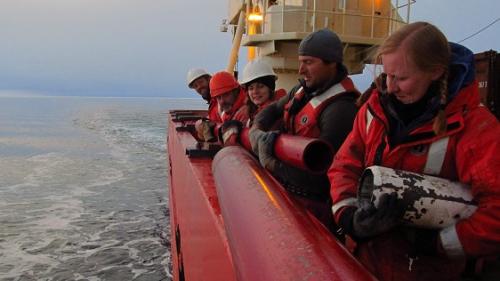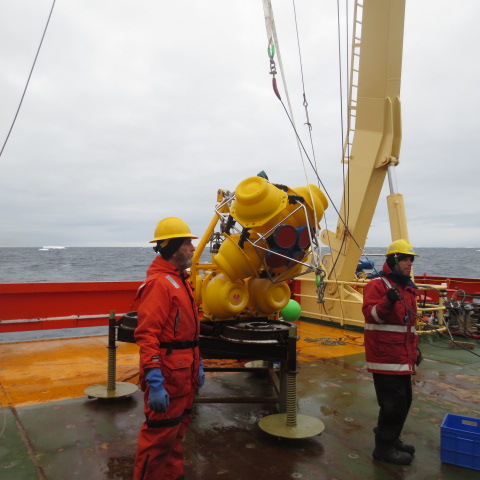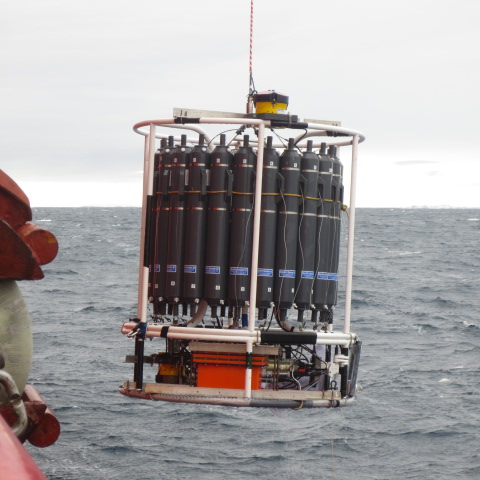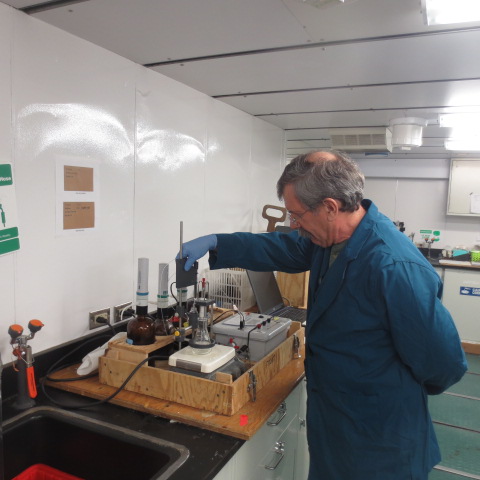"Make hay when the sun shines". My Mom used to say that when it was time to get my chores done. I can almost hear her saying it today. We had a lot to do in one day. We are now in the 36^th day of our cruise and only 3 days left to do science. After that we must prepare for the 1700 mile crossing of the Southern Ocean back to Hobart. If we were playing football (American) we would be at the 2 minute warning. To quote one of my favorite comedians "Let's getter done so we can say we done gotter did" My apologies to my high school English teacher, Sr. Francesca for the poor grammar.
3 days left of science.
 A group of us assembles a jumbo piston core on the starboard side. It will allow us to extract sediment and rock samples.
A group of us assembles a jumbo piston core on the starboard side. It will allow us to extract sediment and rock samples.
 Retrieving a rCTD water sampler. It collects water from different depths. Temperature, salinity and dissolved oxygen are some of the factors we look at.
Retrieving a rCTD water sampler. It collects water from different depths. Temperature, salinity and dissolved oxygen are some of the factors we look at.
Here is a short list of the deployments we did today. I no particular order.
1.Seismic streamer. ( look back at the older journal Seismology 101)This will enable the geologists to analyze to sea floor and below. The images show areas where water and sediment have moved in the past, and where they should sample.
2.rCTD. This device can give an indication where the warmer waters may be undermining the continents ice sheets among others things.
 Our last mooring being deployed. It will remain in place until next year when an Australian research vessel will retrieve it.
Our last mooring being deployed. It will remain in place until next year when an Australian research vessel will retrieve it.
3.A fixed mooring. It will remain in place gathering critical data that enables the oceanographers to track warmer waters, salinity and currents.
4.A YoYo camera . I'm doing tomorrow's journal about it. Wait until you see the pictures it takes.
5.Kasten cores. Again from a previous journal.
 Bruce Huber testing for dissolved oxygen in a sample of water from the rCTD.
Bruce Huber testing for dissolved oxygen in a sample of water from the rCTD.
It is hard to put into pictures and words what a typical day is like on a research vessel. The work is hard and the days are long. But I can tell these folks are doing it for a lot more than a pay check. They believe that there work is vital and must be done. Their findings from this as well as past and future expeditions will only help to answer the questions about this rapidly changing part of our world. I am honored to be able to work with them. Looking forward to showing you the Yo Yo Camera tomorrow.


Comments